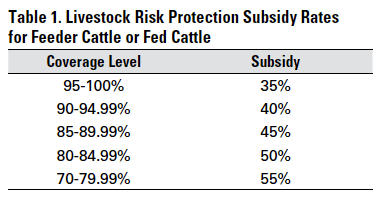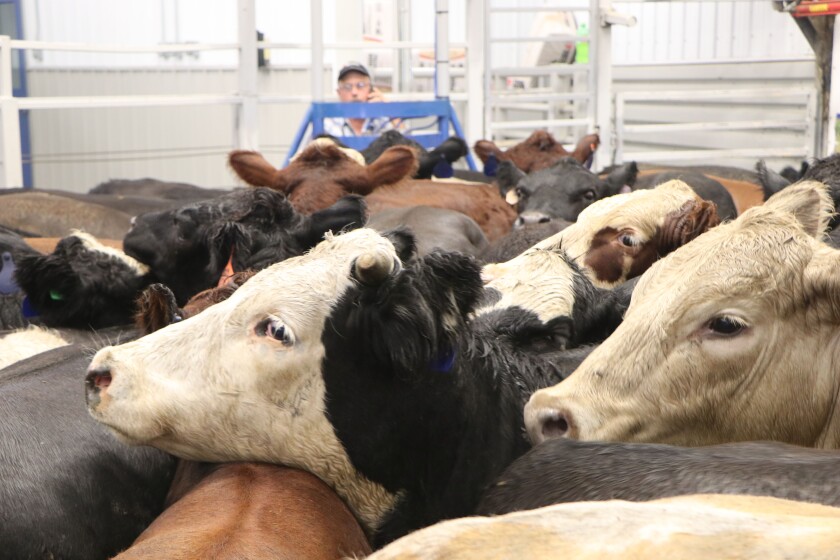Understanding Animals Threat Security (LRP) Insurance: A Comprehensive Guide
Navigating the realm of livestock risk protection (LRP) insurance coverage can be a complicated venture for several in the farming sector. This kind of insurance coverage offers a safety and security internet against market changes and unpredicted conditions that might impact animals producers. By recognizing the complexities of LRP insurance policy, manufacturers can make informed choices that might guard their operations from economic threats. From just how LRP insurance works to the various protection alternatives available, there is much to uncover in this thorough guide that might possibly shape the means livestock manufacturers come close to risk administration in their businesses.

How LRP Insurance Policy Works
Sometimes, recognizing the technicians of Livestock Danger Defense (LRP) insurance policy can be complex, but breaking down just how it functions can provide clarity for ranchers and farmers. LRP insurance is a danger management tool created to secure livestock producers against unforeseen cost declines. It's important to note that LRP insurance coverage is not an earnings warranty; rather, it focuses solely on price risk security.
Eligibility and Protection Options

When it concerns protection options, LRP insurance coverage offers producers the versatility to select the coverage level, protection duration, and endorsements that finest match their risk monitoring demands. Coverage levels generally range from 70% to 100% of the anticipated finishing value of the insured livestock. Manufacturers can additionally choose insurance coverage durations that straighten with their production cycle, whether they are insuring feeder cattle, fed cattle, swine, or lamb. Endorsements such as rate risk security can better customize coverage to protect against unfavorable market changes. By recognizing the eligibility requirements and protection choices offered, animals manufacturers can make enlightened decisions to handle danger properly.
Pros and Cons of LRP Insurance
When assessing Animals Danger Security (LRP) insurance coverage, it is necessary for livestock producers to weigh the disadvantages and benefits intrinsic in this risk monitoring device.

One of the key benefits of LRP insurance policy is its ability to offer security versus a decline in livestock costs. Furthermore, LRP insurance coverage uses a level of flexibility, permitting producers to personalize coverage levels and policy durations to fit their details demands.
One limitation of LRP insurance is that it does not secure against all kinds of dangers, such as condition outbreaks or natural calamities. It is important for manufacturers to meticulously examine their individual threat exposure and economic situation to establish if LRP insurance coverage is the ideal risk monitoring tool for their procedure.
Understanding LRP Insurance Policy Premiums

Tips for Taking Full Advantage Of LRP Conveniences
Making the most of the advantages of Livestock Danger Security (LRP) insurance policy requires calculated preparation and positive risk administration - Bagley Risk Management. To maximize your LRP insurance coverage, consider the complying with tips:
Routinely Assess Market Conditions: Remain notified about market patterns and cost changes in the animals industry. By monitoring these variables, you can make educated choices concerning when to acquire LRP insurance coverage to safeguard versus prospective losses.
Set Realistic Insurance Coverage Degrees: When picking insurance coverage degrees, consider your manufacturing costs, market price of animals, and possible threats - Bagley Risk Management. Establishing practical coverage degrees ensures that you are sufficiently protected without overpaying like this for unnecessary insurance
Diversify Your Protection: As opposed to relying entirely on LRP insurance, think about diversifying your threat monitoring techniques. Integrating LRP with other risk monitoring devices such as futures contracts or options can give comprehensive coverage versus market uncertainties.
Evaluation and Readjust Coverage Frequently: As market problems transform, regularly review your LRP coverage to guarantee it lines up with your existing danger direct exposure. Changing insurance coverage levels and timing of purchases can aid enhance your threat security technique. By following these ideas, you can maximize the Read Full Report benefits of LRP insurance policy and secure your animals operation versus unanticipated risks.
Verdict
In verdict, livestock danger protection (LRP) insurance policy is a useful device for farmers to handle the monetary risks connected with their animals operations. By comprehending how LRP works, qualification and insurance coverage choices, along with the advantages and disadvantages of this insurance policy, farmers can make informed choices to shield their incomes. By carefully taking into consideration LRP premiums and executing methods to optimize benefits, farmers can mitigate prospective losses and make certain the sustainability of their operations.
Livestock producers interested in acquiring Animals Threat Protection (LRP) insurance can check out an array of qualification standards and insurance coverage alternatives tailored to their particular livestock operations.When it comes to protection options, LRP insurance provides producers the versatility to select the protection degree, insurance coverage duration, and recommendations that ideal suit their risk management needs.To comprehend the ins and outs of Animals Danger Security (LRP) insurance policy completely, comprehending the variables influencing LRP insurance costs is essential. LRP insurance coverage premiums are identified by different elements, consisting of the coverage degree selected, the anticipated rate of animals at the end of the coverage period, the type of livestock being guaranteed, and the size of the protection period.Review and Readjust Protection Consistently: As market problems change, regularly examine your LRP protection to guarantee browse around this site it aligns with your current danger exposure.